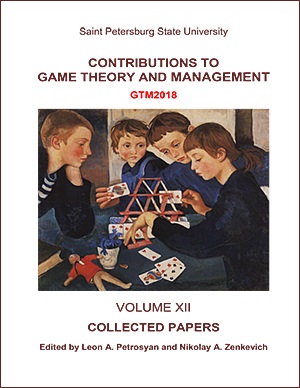Mechanisms of Struggle with Corruption in Dynamic Social and Private Interests Coordination Engine Models
Abstract
A consideration of economic corruption is introduced in the dynamic social and private interests coordination engine (SPICE) models related to the resource allocation. The investigation is based on the hierarchical game theoretic approach in principal-agents systems. From the point of view of the agents a differential game in normal form arises which results in Nash equilibrium. The addition of a principal forms an inverse differential Stackelberg game in open-loop strategies. The related optimal control problems are solved by the Pontryagin maximum principle together with a method of qualitatively representative scenarios of simulation modeling. The algorithms of building of the Nash and Stackelberg equilibria are proposed, the numerical examples are described and analyzed.
Keywords:
social and private interests coordination engine (SPICE) models, inverse differential Stackelberg games, corruption, principal-agents systems
Downloads
References
Downloads
Published
How to Cite
Issue
Section
License
Articles of "Contributions to Game Theory and Management" are open access distributed under the terms of the License Agreement with Saint Petersburg State University, which permits to the authors unrestricted distribution and self-archiving free of charge.




